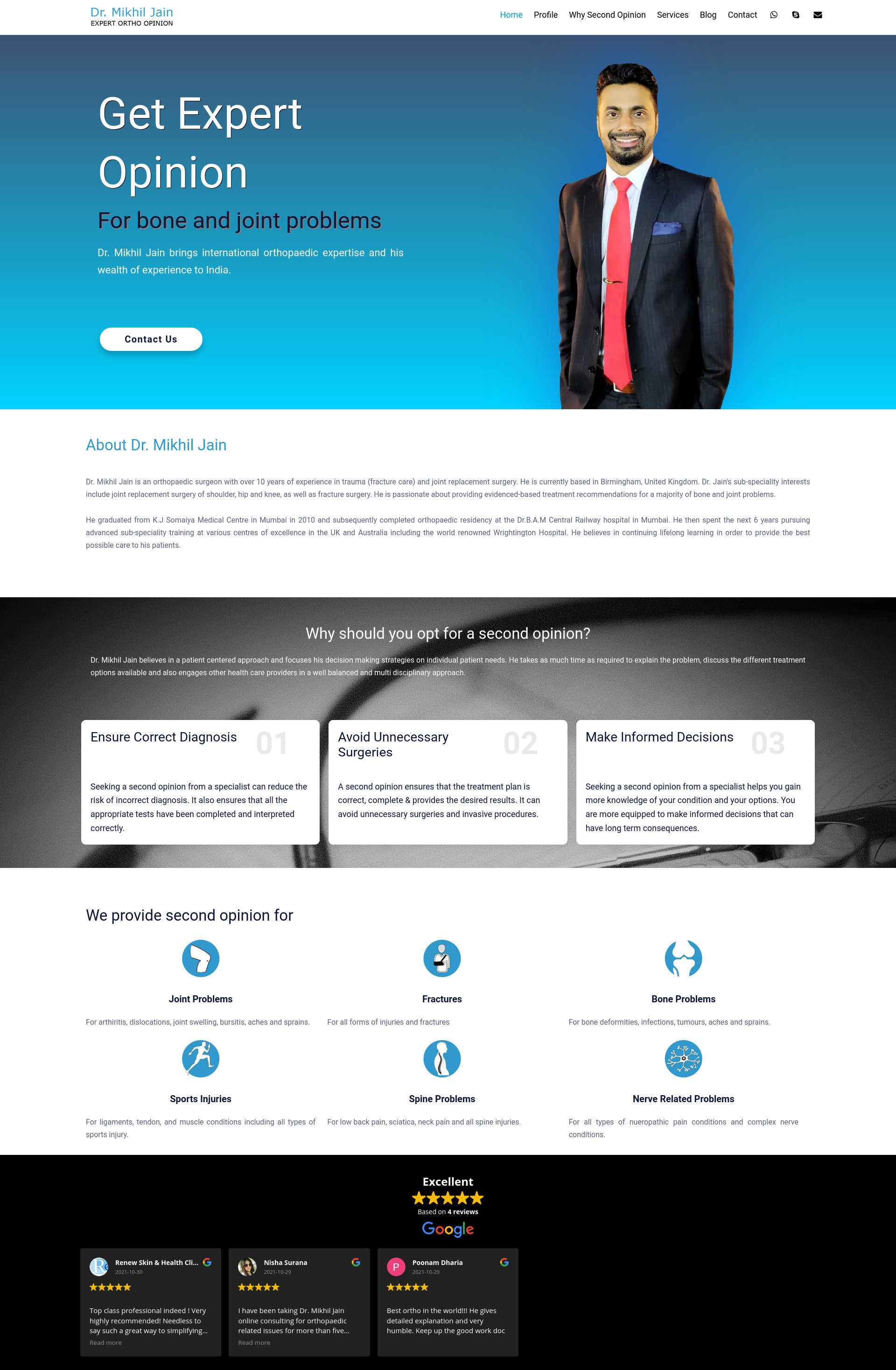About This Project
Here are some website features for an orthopedic doctor serving in the UK:
Essential Information:
- Doctor bio and qualifications: Showcase the doctor's experience, training, qualifications (membership in relevant Royal Colleges), and areas of expertise within orthopedics (e.g., knee surgery, sports medicine, etc.)
- Conditions treated: Clearly list the specific orthopedic conditions the doctor diagnoses and treats.
- Treatments offered: Explain the various treatment options available, including surgical and non-surgical procedures.
- Patient testimonials: Include positive reviews from satisfied patients to build trust and credibility.
- Contact information: Make it easy for potential patients to contact the clinic by providing phone numbers, email addresses, and a contact form.
- Location and accessibility: Clearly display the clinic address, including a map and details on public transport options or parking availability.
Content and Patient Education:
- Blog posts and articles: Provide informative content about common orthopedic conditions, treatment options, recovery processes, and preventative measures.
- FAQs: Address frequently asked questions about consultations, procedures, and insurance coverage within the UK healthcare system (NHS and private).
- Videos: Incorporate educational videos explaining procedures, showcasing facilities, or offering patient testimonials.
- Glossary of terms: Define medical terminology used on the website to improve patient understanding.
Functionality and User Experience:
- Clear and concise layout: Ensure the website is easy to navigate with a user-friendly interface.
- Mobile responsiveness: The website should display well and function properly on all devices (desktops, tablets, smartphones).
- Appointment scheduling: Allow patients to schedule consultations directly through the website.
- Multilingual options (optional): Consider including additional languages if the clinic caters to a diverse patient base.
- Online forms: Offer downloadable forms for new patient registration, medical history, or insurance pre-authorization.
Additional Features:
- Telehealth options (optional): If available, highlight the possibility of virtual consultations for initial assessments or follow-up appointments.
- Patient portal: Provide a secure login area where patients can access appointment details, medical records (with appropriate permissions), and communication channels with the doctor's office.
- Links to relevant resources: Include links to the NHS website, patient support groups, or physiotherapy resources.
By incorporating these features, an orthopedic doctor in the UK can create a website that informs and educates potential patients, builds trust and credibility, and simplifies the process of seeking orthopedic care.




